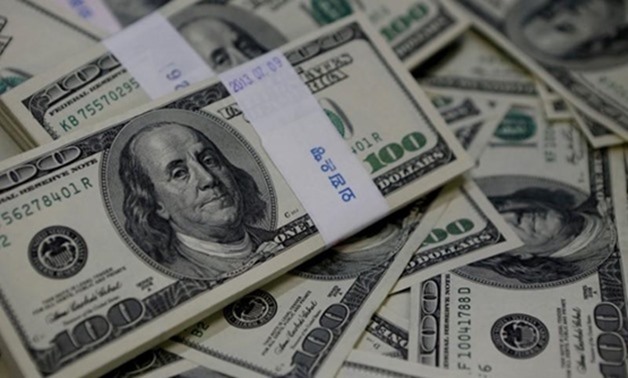
An image showing one-hundred U.S. dollar bills, August 2, 2013 – REUTERS/Kim Hong-Ji/Illustration
TOKYO - 9 July 2018: The dollar struggled near 3-1/2-week lows against its peers on Monday after U.S. jobs data showed slower-than-expected wage growth, while the pound retreated as a key member of Britain’s cabinet resigned over Prime Minister Theresa May’s Brexit plan.
The dollar index against a basket of six major currencies was 0.15 percent lower at 93.877.
It had lost nearly 0.5 percent on Friday and stooped to 93.921, its lowest since June 14, after closely-watched U.S. wages indicators disappointed the market.
The data showed average U.S. hourly earnings gained five cents, or 0.2 percent in June after increasing 0.3 percent in May. This pointed to moderate inflation pressures that dented expectations that the Federal Reserve would raise interest rates a total of four times in 2018. [nLNS6IEEG7]
Nonfarm payrolls did rise by a stronger-than-expected 213,000 in June, Friday’s data also showed, although this had little impact on currencies.
“U.S. wages did not increase so substantially, so there won’t be a rapid pickup in the pace of long-term interest rate hikes,” said Yukio Ishizuki, senior currency strategist at Daiwa Securities in Tokyo.
“If U.S. long-term interest rates don’t rise, there is less support for the dollar-yen.”
The 10-year Treasury yield fell to its lowest level in nearly six weeks on Friday. As a result, the spread between the two- and 10-year yields was at its flattest in 11 years.
The dollar was little changed at 110.42 yen after losing 0.2 percent on Friday.
The euro was 0.2 percent higher at $1.1765. The single currency had risen 0.45 percent on Friday, when it brushed $1.1768, its strongest since mid-June.
The pound erased earlier gains and was effectively flat at $1.3300 .
Sterling had climbed to $1.3328 earlier in the session, its highest since June 14, before pulling back on news that British Brexit Secretary David Davis had resigned, a blow to Prime Minister Theresa May. [nL8N1U40XR]
“If negotiations with the European Union do not progress, there is the possibility of a hard Brexit, so I think it would become a reason to sell,” said Ishizuki.
“On the other hand, there is also the possibility negotiations will progress after the minister is changed... and the pound could be rapidly bought back.”
China’s yuan was up 0.5 percent in offshore trading to 6.6310, moving further away from an 11-month low of 6.7344 reached on July 3.
The Australian dollar rose 0.5 percent to $0.7460, to reach its highest level since mid-June.

Comments
Leave a Comment